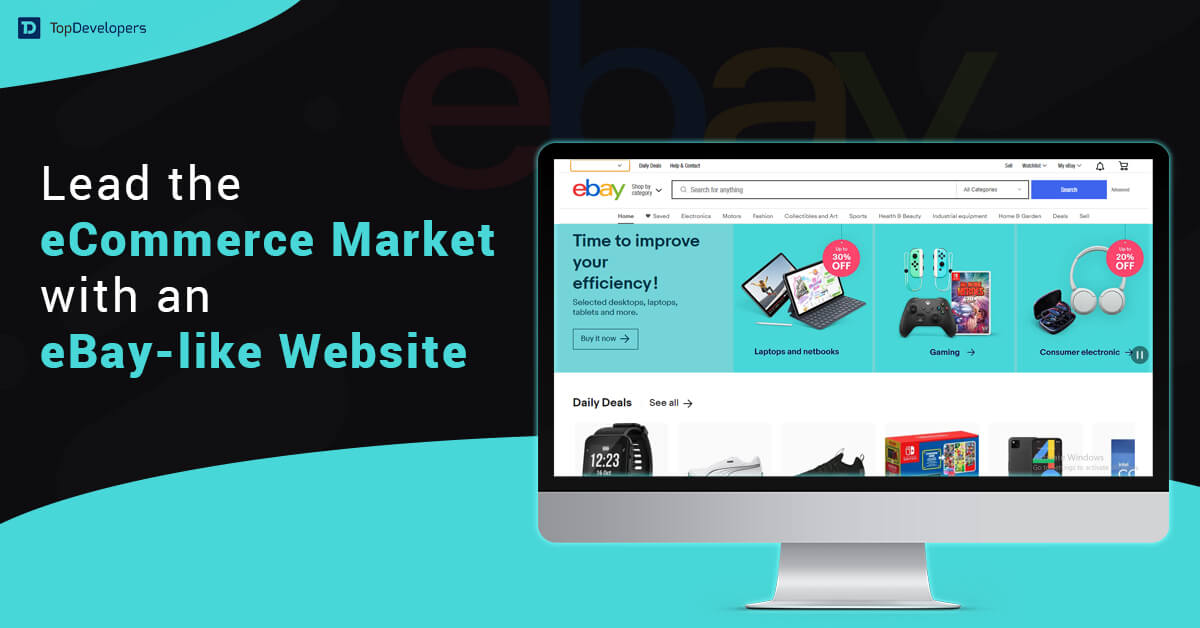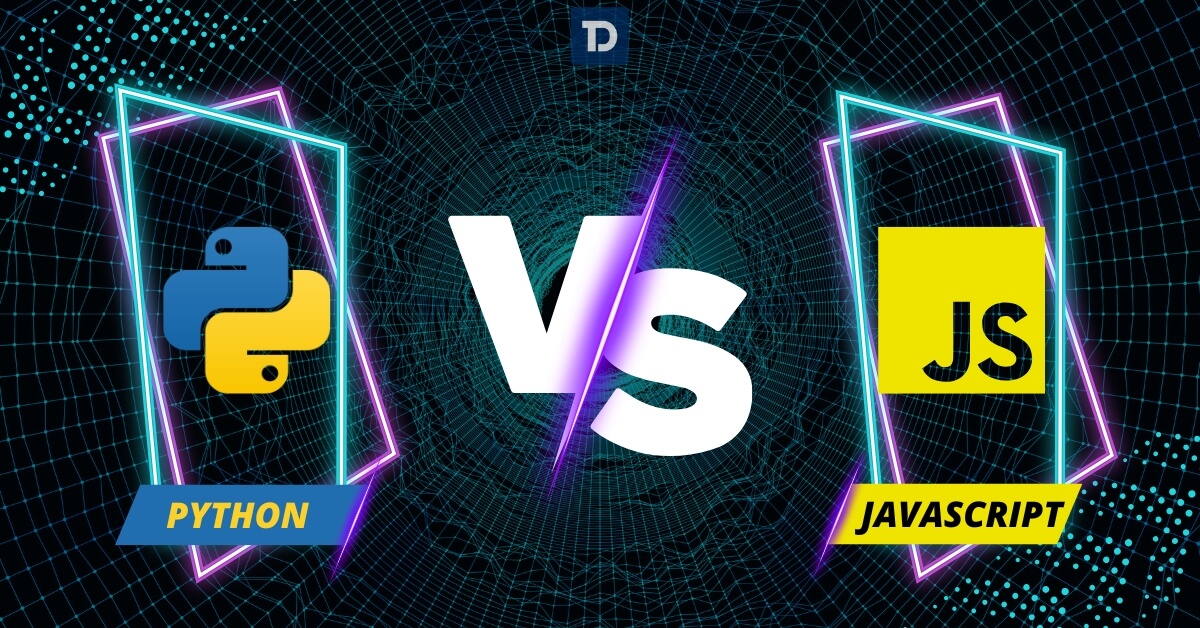
When it comes to selecting professional website development businesses to construct a website, one of the most searched phrases is “web developer versus designer.” Designers are more responsible for designing websites. Nevertheless, the two names are often confused by individuals. It is not uncommon for individuals to have the two terms confused with one another since web designers and web developers both play a part in the process of establishing a website. On the other hand, if you are looking for a more insightful comparison between web designer vs. web developer, then this blog post is just what you should read today. Before we proceed, let’s first review the differences between web designers and web developers.
The developers are responsible for developing the fundamental structure of the website via the use of coding languages, while the designers are responsible for the “creative” aspect of the overall image. The creations of the designers are brought to life by the developers via the use of the codes. As a result, it is impossible for anybody to assert that one is more significant than the other. When it comes to bringing out a website that brings in money and success for the company, each of them plays a distinct function, but they are simultaneously equally significant
Table of Contents
- Overview of Web Designers and Developers
- What does a web designer do?
- What does a web developer do?
- Type of Web Designer and Web Developer
- What are the skills of web designers?
- What are the skills of web developers?
- Web Designers Vs Web Developers: The Major Difference You Need to Know
- Web Designer vs. Web Developer: How much do they charge?
- When to Hire Web Designer or Web Developer: Some Use Cases
Overview of Web Designers and Developers
When it comes to having a web development team, developers and designers are the core structure of a website development team. They are the ones who help you build a website that perfectly aligns with trends and your business vision. A web developer is the one who programs your website, while a web designer creates visual appeal. We have explained these terms in detail for you.
What is a web designer?
Let’s begin by examining the definition of a web designer in the context of the comparison between web developers and web designers. The role of a designer is to create the visual aspect of the website. Their goal is to deliver the combined benefit of a visually appealing and user-friendly web design. They aim to attract more visitors to the website through both these strategies. Additionally, the organization has a motto focused on retaining visitors for a longer duration.
In addition, the designers also need to remain concerned about how their design will affect the website’s coding. This concern is one reason designers must stay updated with modern web design trends. In brief, the designers create the structure of the site, and the developer brings it to life.
What is a web developer?
The other part of web developer vs. web designer is the web developer. Well, the primary role of the developer is to build and maintain the website’s core structure. Their role involves technical aspects like coding and using advanced programming languages. In summary, web developers take the website design ideas created by designers and bring them to life through coding, transforming them into fully functioning websites.
To understand this simply, web developers create websites that allow users to interact with the business. The web developers also test and debug the code. Also, they handle post-launch services like ongoing support, maintenance, fixing servers, etc.
What does a web designer do?
The web designer plays a vital role in creating an appealing interface that translates business vision. They aim to design a visually attractive layout using the right mix of graphic elements, color scheme, and content, which is responsive across all screen sizes and drives conversions with higher engagement levels. The best web designers always prioritize understanding the type of website that the client wants before creating a layout structure.
This information enables crafting an intuitive interface that intrigues the users and delivers the best experience. Feedback from the target audience and various tests enhance the effectiveness of the design. Website designers keep up with the latest web design trends and technologies to create a modern interface while adhering to design standards and best practices.
What does a web developer do?
The work of web developers is more technical. They engineer the website from scratch using programming languages, frameworks, APIs, databases, and coding techniques. They add life to the concepts or structures created by web designers and turn them into real websites. Furthermore, they are responsible for developing front-end functionalities that are easy to navigate and accessible. Seamless database management and server configurations ensure user-facing features perform as expected.
We continuously test the functionalities to ensure we fix bugs, address performance issues, and eliminate website crashes. Post-launch, web developers provide ongoing support and maintenance services that guarantee the website functions smoothly forever. They have different ways of improving the website to ensure it remains up-to-date.
For example, they suggest enhancing the website with emerging technologies to keep the customers visiting and engaging. New technology leverage enhances security and helps websites outsmart cyber fraud.
Type of Web Designer and Web Developer
The web design and development field is diverse, with professionals specializing in different aspects of creating and maintaining websites. Below is a breakdown of the key roles:
Types of Web Designers
In a comparison between a web designer and a web developer, the designer team plays a crucial role. You can segregate designers into various types, according to the work they do. For example, web design, game design, app design, interaction design, and user experience design are some examples of web designers. However, there are basically 3 types of web designers with varied skill sets; they are
- UX Designers
- UI Designers
- Visual Designers
Let’s explore the three main types of designers in detail.
1. UX designer
They design the website appropriately to engage customers and create a positive user experience. They create human-centric designs based on the collected data.
2. UI designers
They are a significant part of the web design process. UI designers work to enhance the website’s usability and optimize it in a manner to encourage soaring conversions.
3. Visual designers
Visual designers play an intriguing role. They work with the website’s layout and visual elements. Furthermore, their portfolio combines both UI and UX design. In other words, the key role of a visual designer is to ensure that the interface of the website is visually pleasing and easy to use!
Types of Web Developers
You can find web developers having expertise in various technologies; albeit there are 3 main types of web developers, they are
- Front-end web developers
- Back-end web developers
- Full-stack web developers
Additionally, you can find developers who have expertise in various technologies, including artificial intelligence, machine learning, the Internet of Things, augmented reality, virtual reality, and many others. However, they all fall within three categories. Let’s explore them in detail.
1. Front-end web developers
They code the website using CSS, HTML, JavaScript, and content management systems (CMS). We also refer to them as client-side developers, who code and program the website’s visual elements. The front end is what the users see; that is why there is considerable overlap between front-end developers and web designers.
2. Back-end web developers
They handle the development of behind-the-scenes components, specifically server-side development! These developers code the database and server using high-standard languages like PHP, C++, Java, Ruby, and even Node.js.
3. Full-stack web developers
A full-stack developer is the one that takes care of both the front and back end of a website. In addition to constructing the websites using programming languages, they also configure servers, code the APIs, and query databases.
What are the skills of web designers?
The web designer must have the following skills to do their job excellently and stay successful.
- Expertise in CSS and HTML
- Understanding of web accessibility standards
- Knowledge of website design principles
- Graphic design skills
- Wireframing and prototyping
- User journey mapping
- Responsive design creation
- Usage of various design tools
- Awareness of coding languages
- Creative problem-solving approach
- Experience in color theory and typography
- Communication and Collaboration
- Project management
This is only the beginning. The web designers need to continuously update themselves with upcoming technologies, tools, and trends that allow them to stay current. The combination of technical and non-technical skills enables web designers to craft the website designs that align with clients’ expectations and deliver breathtaking experiences to the target audience.
What are the skills of web developers?
Web developers do their work proficiently when they have the required knowledge and technical skills. Such as
- Deep understanding of front-end programming languages
- Significant expertise in back-end programming languages
- Enhancement with API integration
- Analytical thinking and problem-solving approach
- Familiarity with databases and CMS
- Testing and debugging
- Search engine optimization
- Project management
- Multi-tasking capability
- Knowledge of different tools and platforms
- Awareness of hosting control panels and FTP
Becoming proficient in all the skills is an integral part of the web developer’s profession. Web developers need to gain and hone their skills to build diverse projects. These talents enable web developers to successfully build full-fledged websites using the right set of technologies and tools collaboratively.
Web Designers Vs Web Developers: The Major Difference You Need to Know
Now that we are aware that web designers and web developers are two distinct profiles, let’s glance through the key differences between them. So, here’s the most awaited web developer vs. designer.
1. Web designers need not code
Web designers take care of the look and feel of the website. Thus, for that purpose, they may use tools like Photoshop to create the images and a prototyping tool like InVision to create a mockup. However, none of the two objectives require them to code or use website programming languages like HTML, CSS, and so on.
2. Web developers don’t create visual elements for the website
Web developers program the website using languages like HTML, CSS, and JavaScript. They use coding skills to translate the designer’s wireframes to a website that is functioning and alive! In summary, they utilize code to implement the buttons, color schemes, and fonts on the website, rather than designing or planning them.
3. Web developers are more costly
Comparing the website developers’ cost vs. the web designers’, the latter is more expensive. The primary reason for the increase in the cost of hiring a web developer is that there are more web designers than web developers, which illustrates the rule of supply and demand.
Web Designer vs. Web Developer: How much do they charge?
There are ample employment opportunities with attractive annual salary packages for web developers and web designers. In the next decade, we expect a 13% increase in demand for web designers and web developers due to the increasing number of website development projects.
The statistics from Glassdoor state that the US web designer gets an average of $63,019 annually as compensation. In contrast, the annual salary of the US web developer goes up to $82,450 in 2024.
You can easily estimate the web development cost by translating the salaries of US web developers or designers into hourly rates. The web designer’s charges are around $38 per hour, and the web developer’s cost is around $45 per hour. Multiplying the hourly rate by the total development and design hours allows you to calculate the website development cost.
For example, when your basic web development project consumes 500 working hours (300 hours for web development and 200 hours for web design), then the website development cost in the USA looks like this:
Web development cost = 300*$45 + 200*$38 = $13500 + $7600 = $21100.
The web design and development cost rises when the number of functionalities and design complexity grows, as it increases the number of working hours. Additionally, when the project requires specialists or senior developers/designers, the hourly rate increases proportionately.
When to Hire Web Designer or Web Developer: Some Use Cases
As discussed, the web developer and designer’s combined strength makes the web development project a grand success. Hiring an individual web developer or web designer is sometimes enough. Website development goals determine this.
For example, hiring a website designer is sufficient when you want basic website development with a homepage layout. The familiarity with basic coding languages and design skills allows them to create a basic website.
On the other hand, hiring a web developer is essential if you are looking for mobile-optimized website development, including a contact form, advanced functionalities, and other content.
Understanding the differences between a web designer and a web developer also helps you determine which development scenario requires each role.
Web Developer vs. Web Designer: Which Is Better?
In the field of website development, you require experts rather than generalists. A web designer and a web developer share similar experiences. Although you will find web developers and web designers have some overlap in skills, hiring specialists with the required skill sets is imperative for successful website development.
Web designers focus on visual appearance and usability when conceptualizing website ideas. On the contrary, web developers are tech geeks who shape the vision into a full-fledged solution after analyzing if the website layout is technically plausible. Both web developers and designers play unique roles that depend on each other.
Web developers handle technical aspects to create the best functionalities, and web designers take care of visual work that enhances user experiences. The collaborative efforts of web developers and web designers can take projects from conceptualization to final deployment, so asking such questions doesn’t make sense.
FAQs
1. What’s the Core Difference Between a Web Designer and Developer?
Web designers focus on visual aesthetics (UI/UX, layouts, branding) using tools like Figma or Adobe XD, while developers build functional websites through coding (HTML/CSS, JavaScript, PHP). Designers create the “look,” developers make it work.
2. Can a Web Designer Also Be a Developer (or Vice Versa)?
Yes! Many professionals bridge both roles as “designer-developers” or “unicorns.” Designers can learn basic front-end code (HTML/CSS), while developers can study UI/UX principles. Tools like Webflow blur these lines further.
3. Which Role Earns More: Web Designer or Developer?
Typically, developers earn higher salaries (especially backend/full-stack), but senior UI/UX designers at top agencies can match them. Location, skills (e.g., React for devs, UX research for designers), and industry impact pay.
4. Do I Need Both a Designer and Developer for My Website?
For complex projects, yes—designers ensure user-friendly visuals, while developers handle functionality. Small sites may only need one (e.g., a WordPress designer-theme customizer). Agencies often provide both roles.
5. How Do Designers and Developers Collaborate on Projects?
Through tools like Figma (design handoff), GitHub (code sharing), and agile workflows. Designers provide mockups/style guides; developers translate them into code, with feedback loops for adjustments.
 Avantika Shergil
| May 9, 2025
Avantika Shergil
| May 9, 2025
Avantika Shergil is a technology enthusiast and thought leader with deep expertise in software development and web technologies. With over 8 years of experience analyzing and evaluating cutting-edge digital solutions, Avantika has a knack for demystifying complex tech trends. Her insights into modern programming frameworks, system architecture, and web innovation have empowered businesses to make informed decisions in the ever-evolving tech landscape. Avantika is passionate about bridging the gap between technology and business strategy, helping businesses build customized software and website, and understand about different tools to leverage effectively for their ventures. Explore her work for a unique perspective on the future of digital innovation.





